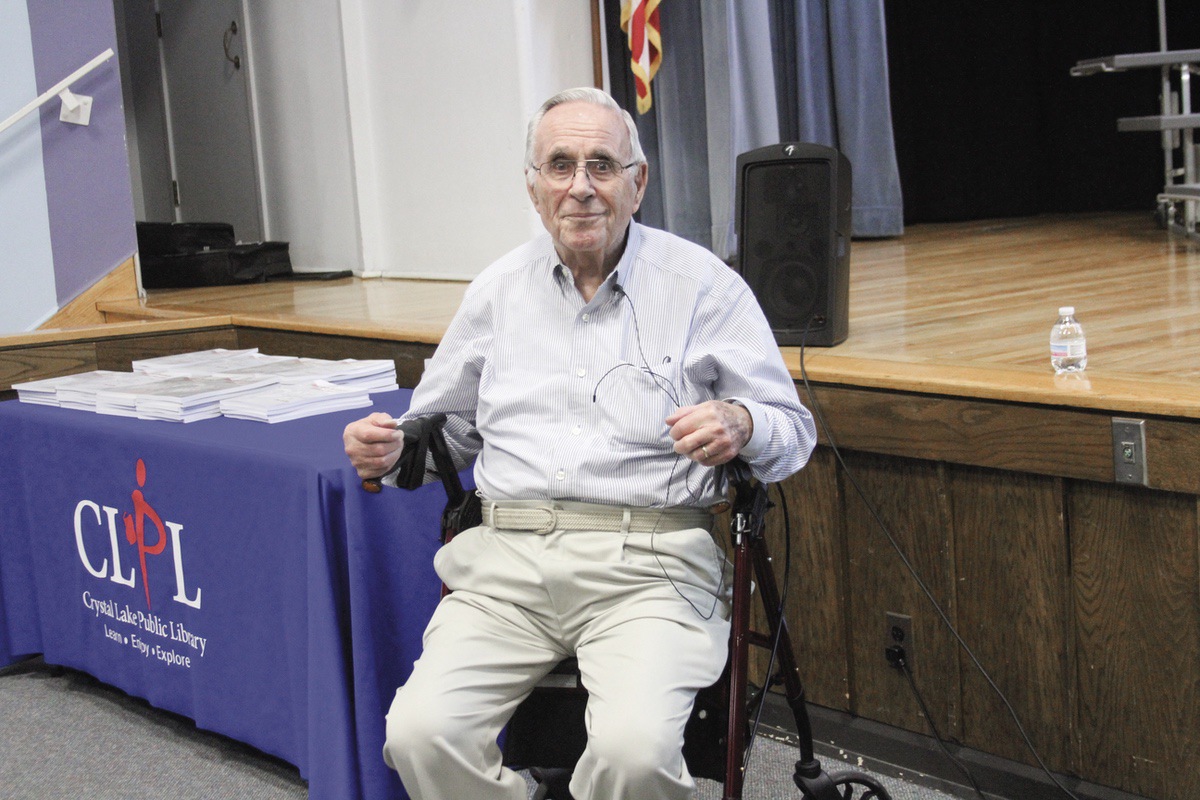Steen Metz remembers the day exactly when, as an 8-year-old only child, his life changed drastically in his hometown of Odense, Denmark. The day was Oct. 2, 1943.
“Two or three German officers came to the door,” Metz said. “They allowed my mother to go to the bakery downstairs to get some food, but they held my father.”
The family of three, Steen’s dad Ahen and mom Eileen, learned they would be on a journey to Theresienstadt Concentration Camp, where they would spend the next 18 months as prisoners of the Nazis.
Metz spoke on Jan. 27, which is International Remembrance Day, the 80th anniversary of the Russians’ liberation of Auschwitz Concentration Camp. Metz’s program at Husman Elementary School in Crystal Lake, offfered by Crystal Lake Public Library, was well attended with 200 people present. Metz, a resident of Barrington, authored a book in 2018 about his experiences, “A Danish Boy in Theresienstadt.”
Metz came to the USA in 1962, after living and working in England and Canada. He later worked in the food industry. He now is part of the Illinois Holocaust Museum’s Speakers Bureau.
“I have made it my mission to spread the word about the Holocaust,” he said. “I have been giving talks since 2012, and have reached over 115,000 people. I say to audiences at each of them to tell four other people that the Holocaust did happen, because soon none of us survivors will be left,” Metz said. “I really enjoy the exchanges with the audiences.”
“My mom and I did not talk about it much. But I talked about it with my daughter and grandchildren,” he said in response to an audience question.
Metz is one of only 1,500 children at Thereseinstadt Concentration Camp who survived. He said the three years previous to the deportation were fairly normal in Denmark, as compared to other countries. This was in part due to the country’s agricultural nature, which could supply Germans with food.
“I don’t know how one human being could treat another that way,” Metz, 88, said. “It was the ultimate form of discrimination.”
He recalled the trip in cattle cars along a railroad from his hometown to the camp.
“We were all in dark cattle cars, and could not sit down, and the smell was awful,” he said. “It was intense. You had to go to the washroom in a bucket. We managed to share some food. We had one stop for food and some water in the 80-hour trip.”
He described daily life at the concentration camp.
“If you were over 16 at the camp, you had to work, but I was eight years old, so I did not have to,” Metz said. “I delivered messages to the various offices of the Germans and mom worked at the factory. My father, who was a lawyer, had to do manual labor, but he could not keep up with the production, so he later got sick and died of malnutrition at age forty. But the official cause of the death was pneumonia, which my mom had to say later. A total of 35,000 prisoners from that camp died from hunger.”
“We stood in food lines for forty to fifty minutes, and all they gave us was potato peels and bottled water; there was no variety, but once a week we did get potato dumplings. I’m not sure how we survived. When I was nine years old, I did not realize that food was like gold,” Metz commented.
Playing his favorite sport, soccer, with a rag, was the one thing that kept him happy. But there were watch towers and guards that were a reality.
It was on April 15, 1945 that happiness returned to the Theresienstadt Concentration Camp. Red Cross trucks were allowed in, the first step in the prisoners’ release to Sweden and eventually back home by May 5, 1945, his 10th birthday.
“I think one of Adolph Hitler’s lieutenants, Heinrich Himmler, saw the war was over and wanted to be treated more fairly. It was a miracle day,” Metz told the audience.





